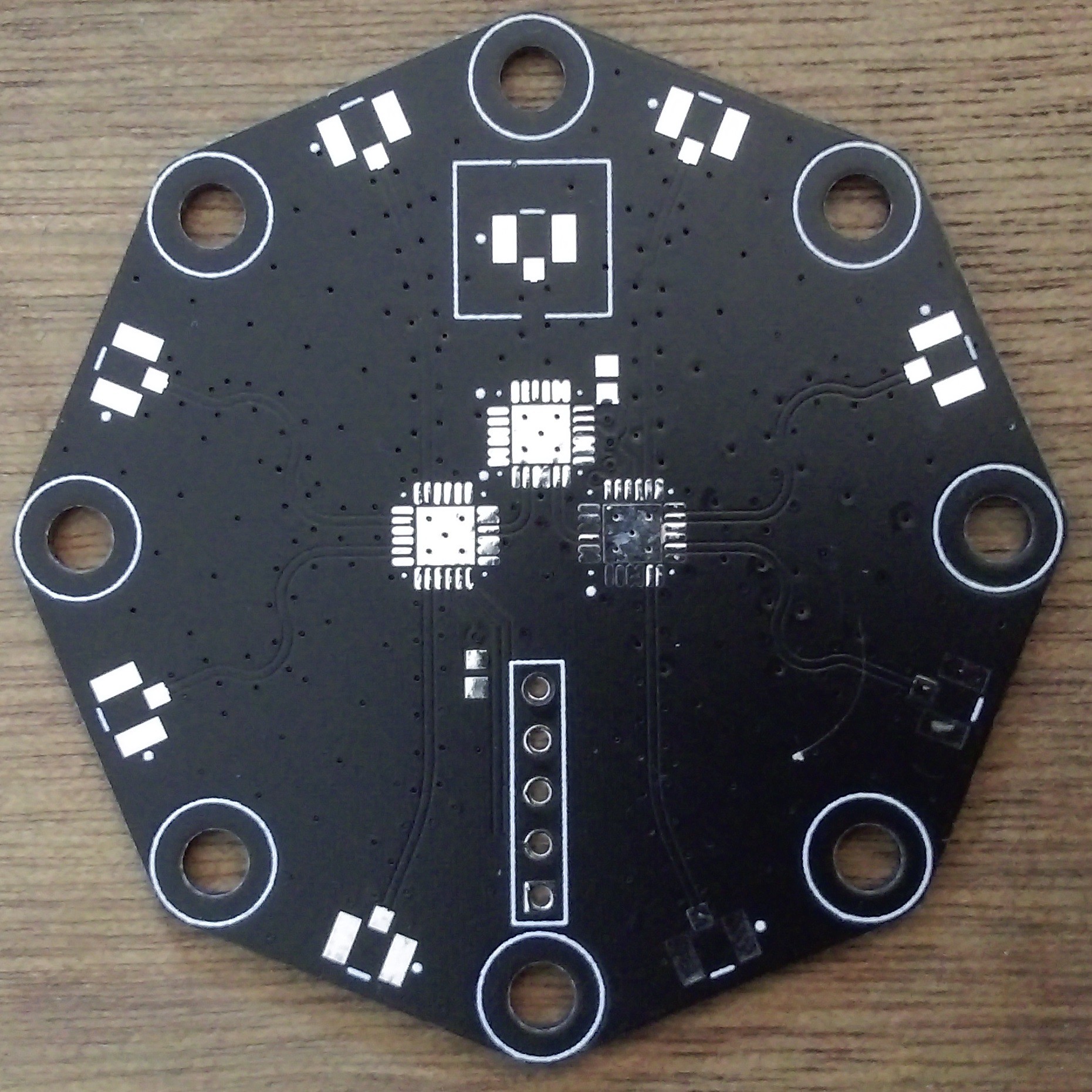After waiting a few weeks, the PCBs are now in my possession. I also have all the components I need to build them, even with some self sabotage by ordering the wrong antennas and forgetting to order a coax cable with the parts for Digikey. Firstly we have the radio board:
 And secondly the antenna board:
And secondly the antenna board:
 Initial inspection shows everything to be in order. I should have tented the bottom side of the thermal vias on the antenna board, but its not really a problem. I also should have a bit more imagination when it comes to silkscreens but that doesn't affect anything electrical.
Initial inspection shows everything to be in order. I should have tented the bottom side of the thermal vias on the antenna board, but its not really a problem. I also should have a bit more imagination when it comes to silkscreens but that doesn't affect anything electrical.
I am very happy with the rounded corners on the PCBs, possibly I should have used a larger radius, but I think all my projects will use rounded corners from this points. Also I would highly recommend having mounding holes all over the place. It the board to be held much more easily, and without the possibility for damage to the board from what is being used to hold it. All you need is to put a bolt through a hole, attack it in place with a nut on the other side and then have something hold the bolt: For larger boards you might want to do the same thing at the other end of the board to help support it, but even with just one, it is fairly stable.
For larger boards you might want to do the same thing at the other end of the board to help support it, but even with just one, it is fairly stable.
Next is soldering everything on. I will gloss over this as there are plenty of guides on SMD soldering, and as I'm using neither a stencil or re-flow oven, I'm hardly a good influence. The main points of interest are that I'm glad I changed away from 0201 components that the Nordic design suggested, the USB was much easier to solder than the normal USB-C connectors, and that when soldering QFNs like this it is a good idea to re-flow the solder paste before butting the chip on to make sure there is enough on all the pads. An afternoon later gives me:
 Not the neatest ever, and it could do with cleaning some of the flux off, but not the worst job ever. Now I just need to program it right. Well this is where I've run into problems. I got a couple of ST-LINK clones and put Black Magic firmware on one. However, after several days of banging my head against a wall, I discovered that while the Black Magic firmware does support nRF52 chips, only the latest version does. What is more, the latest version needs more flash than these cheap programmers have. As such I need to find a new programmer. The option I went for is a Bumpy, which is more or less one of my cheap programmers with enough memory for the up to date firmware. However, this will take a while to arrive so will leave this for now.
Not the neatest ever, and it could do with cleaning some of the flux off, but not the worst job ever. Now I just need to program it right. Well this is where I've run into problems. I got a couple of ST-LINK clones and put Black Magic firmware on one. However, after several days of banging my head against a wall, I discovered that while the Black Magic firmware does support nRF52 chips, only the latest version does. What is more, the latest version needs more flash than these cheap programmers have. As such I need to find a new programmer. The option I went for is a Bumpy, which is more or less one of my cheap programmers with enough memory for the up to date firmware. However, this will take a while to arrive so will leave this for now.As an extra note, a thought came to me (just a few days before the new programmer should arrive) that I could probably just replace the chip on one of my cheap programmers with one with enough memory, and use the other programmer to program the correct firmware on it. Unfortunately I have already ordered the better programmer (and this might not actually work), but its something to try out whenever I next order components.
 Charlie Smith
Charlie Smith
Discussions
Become a Hackaday.io Member
Create an account to leave a comment. Already have an account? Log In.